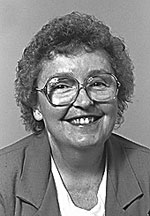Cornucopia / Cynthia Dewes
Alaska: Where the wild things are
 Alaska may be the last place on our minds during the month of July. It just doesn’t seem like a summer vacation kind of place. But it’s on my mind because of a recent trip we took there. Come to think of it, warm July may be a perfect time to visit that far-northern state.
Alaska may be the last place on our minds during the month of July. It just doesn’t seem like a summer vacation kind of place. But it’s on my mind because of a recent trip we took there. Come to think of it, warm July may be a perfect time to visit that far-northern state.
I always knew that Alaska was a huge state, but the way it’s presented on maps of the U.S. may not make that clear to some of us.
One Alaskan wag we met showed us a tongue-in-cheek map of Alaska he had on the wall: Alaska was presented in its hugeness, taking up the entire center, with the lower 48 states pictured in a small box at the lower left corner of the map. He said that’s probably how most folks think of Alaska—as only a little square in the corner.
Not only is Alaska big, but its qualities dwarf many of the claims bragged about by other states. It has many more lakes than Minnesota’s 10,000, for instance, and its temperature swings in one day are greater than those in any other place in the U.S. On the other hand, its population is so small that, besides its two senators, it claims only one representative in the U.S. Congress.
One reason for this is the hardship of trying to create housing in a place with permafrost only 12 inches below the surface of the soil. Permafrost means just that—it’s ice from there on down. So, homeowners can’t drill septic systems or water wells. They must rely on holding tanks for waste and water, which must be filled and emptied. And this is in a place where you can receive 200 inches of snow in one winter!
One thing I noticed about Alaskans: Most of them appear to be less than 50 years old. And I know why. You’d have to be young, healthy and tough to survive in a place like that. The winters are harsh, the snow is deep, and supermarkets do not abound on every corner. Even Juneau, the state capital, can be reached only by sea or air since there are no highways running into it.
We were told that older Alaskans go to Hawaii or somewhere in the lower (far lower) 48 states during wintertime. Some native Alaskans even live elsewhere during most of the year, as does one man who runs a cattle ranch with his family in Texas for a living. He returns to Alaska with his dog for three months every summer, driving a tour bus just to enjoy the home place he loves and share it with visitors.
There are things in Alaska you just don’t see anywhere else, such as the huge glaciers in Glacier Bay, and the dogs and humans who compete in the annual Iditarod dogsled race. There’s also Mount Denali, the tallest mountain in North America, known as Mount McKinley before Alaska came into U.S. possession during William McKinley’s presidency. It is Denali for the Tlinglit Indians who lived there then and now.
I’d say Alaska seems to be one of the last wild places in the world, in the best sense of that word. Nature is largely unspoiled and unexploited, and people are devoted to values inspired by necessity for survival and the need for personal verification. Cooperation and looking out for one’s neighbor is a given. You might say it’s God’s country.
(Cynthia Dewes, a member of St. Paul the Apostle Parish in Greencastle, is a regular columnist for The Criterion.) †
 Alaska may be the last place on our minds during the month of July. It just doesn’t seem like a summer vacation kind of place. But it’s on my mind because of a recent trip we took there. Come to think of it, warm July may be a perfect time to visit that far-northern state.
Alaska may be the last place on our minds during the month of July. It just doesn’t seem like a summer vacation kind of place. But it’s on my mind because of a recent trip we took there. Come to think of it, warm July may be a perfect time to visit that far-northern state.